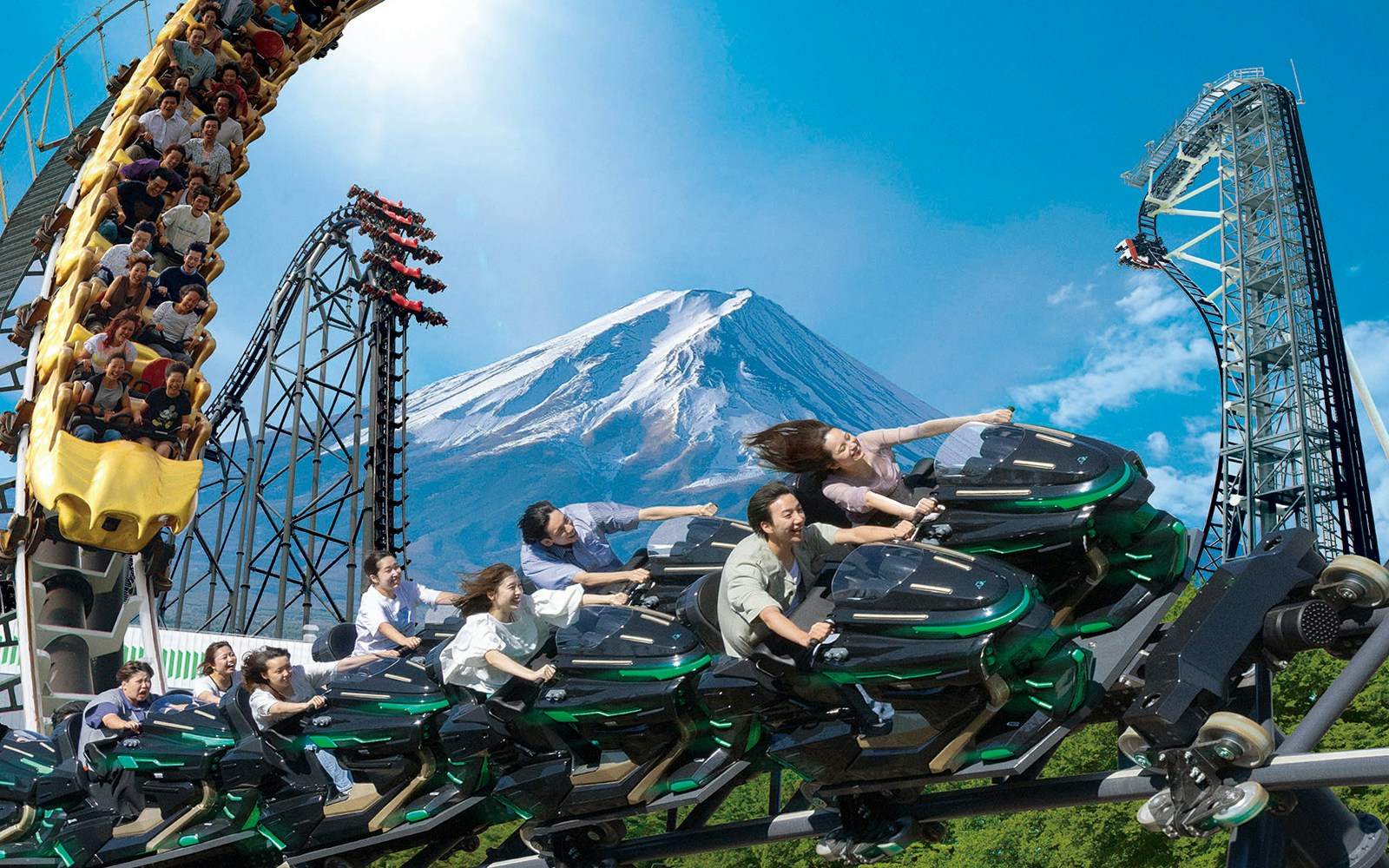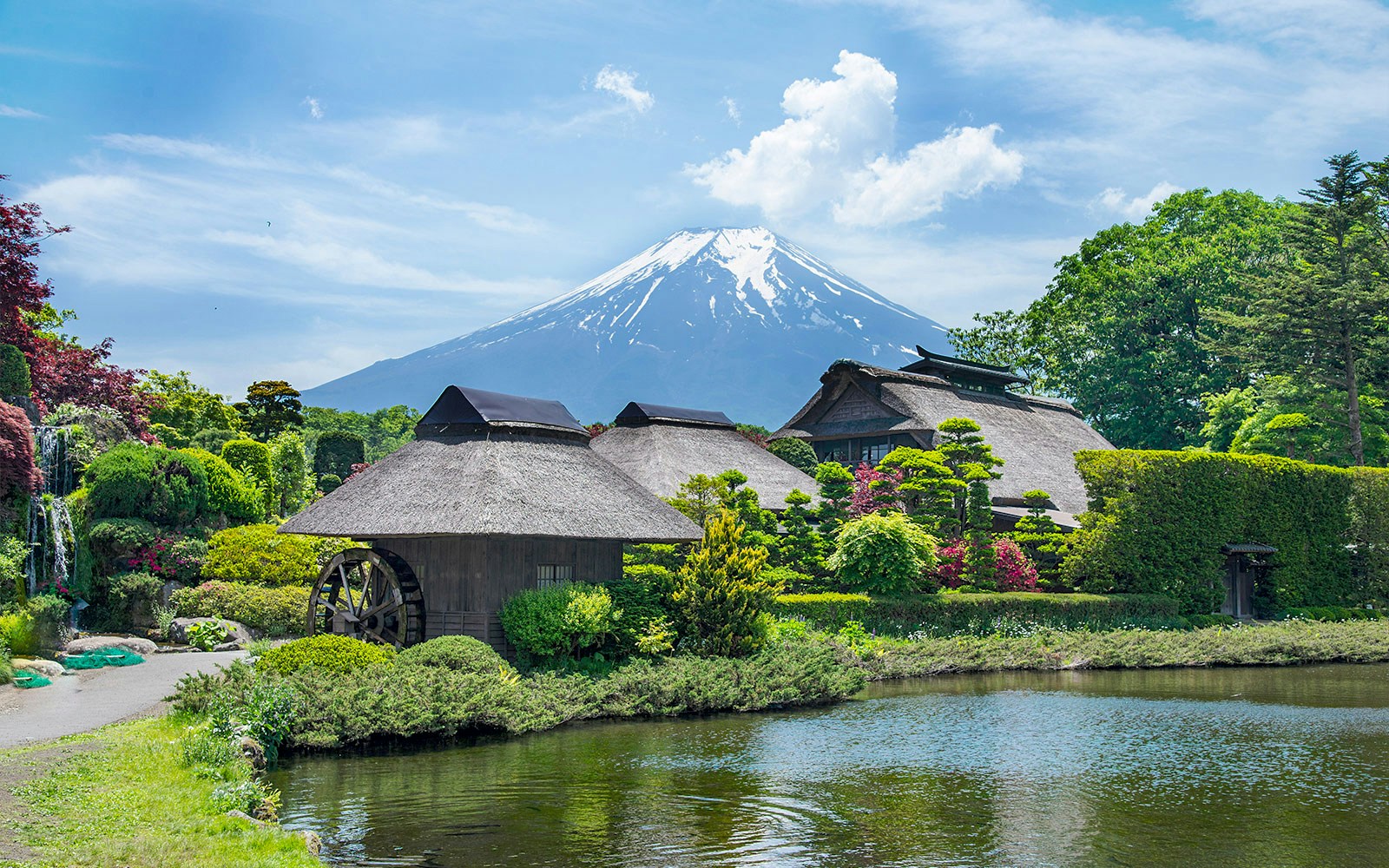- The optimal period for viewing Mount Fuji is during the shoulder seasons of spring (late March to May) and autumn (mid-September to November), when the weather is milder and skies clearer.
- Summer (June to August) offers lush, green landscapes but higher chances of clouds, while winter (December to February) reveals the mountain's majestic snow cap.
- Visibility is subject to change, as Mount Fuji is notoriously elusive and can be obscured by clouds even on clear days. Early mornings or late evenings are often the best times to catch a glimpse of the mountain.
Best places to see Mt. Fuji
Lake Kawaguchiko
A serene lake known for its clear reflections of Mount Fuji.
Imagine seeing Mount Fuji reflected perfectly on Lake Kawaguchiko's still waters, especially beautiful in the quiet morning or the glowing evening. The area around the lake is peaceful, with small towns and boat rides that let you enjoy the mountain’s reflection up close.
Chureito Pagoda
An iconic pagoda that offers a picturesque view of Mount Fuji, especially during cherry blossom season.
Standing by Chureito Pagoda, you’ll see Mount Fuji standing tall behind the bright red pagoda. In spring, cherry blossoms add a pink hue, and in autumn, the leaves turn red and yellow. It’s a stunning view that changes with the seasons.
Mount Fuji 5th Station
The gateway for climbers and a viewpoint located halfway up Mount Fuji.
At the 5th Station, you're halfway up Mount Fuji, above the clouds. From here, you can look up to see the summit or down over the countryside below. It feels like you’re on top of the world, with a clear view of how big and beautiful Mount Fuji really is.
Fuji Q Highland
An amusement park near Mount Fuji, offering thrilling rides with unique views of the mountain.
Imagine being on a roller coaster, screaming with excitement, and then you see Mount Fuji right there beside you. Fuji Q Highland combines fun rides with amazing views of the mountain, adding a unique twist to your adventure.
Lake Yamanakako
The largest of the Fuji Five Lakes, known for its expansive views of Mount Fuji.
From Lake Yamanakako’s southern shore, you can see Mount Fuji across the water. In the early morning, the lake might be misty, creating a magical look as the sun lights up the mountain's top.
Saiko Iyashi-no-Sato Nemba
A restored traditional village near Lake Saiko, offering a cultural experience with Mount Fuji as the backdrop.
Walking through this old village, you’ll see Mount Fuji like it’s watching over the traditional houses. The mountain is everywhere you look, blending the past with the stunning natural scenery around you.
Oshino Hakkai
A quaint village known for its eight clear ponds and scenic views of Mount Fuji.
In Oshino Hakkai, the eight ponds show reflections of Mount Fuji, making it feel close and personal. This place combines clear waters, thought to come from the mountain, with a direct view of Fuji’s peak, showing off nature’s beauty.
Mishima Skywalk
Japan’s longest pedestrian suspension bridge, offering panoramic views of Mount Fuji.
Crossing the Mishima Skywalk, you get an amazing view of Mount Fuji across the valley. The mountain looks even more impressive from up high on the bridge, giving you a feeling of excitement and peace as you take in the view.












